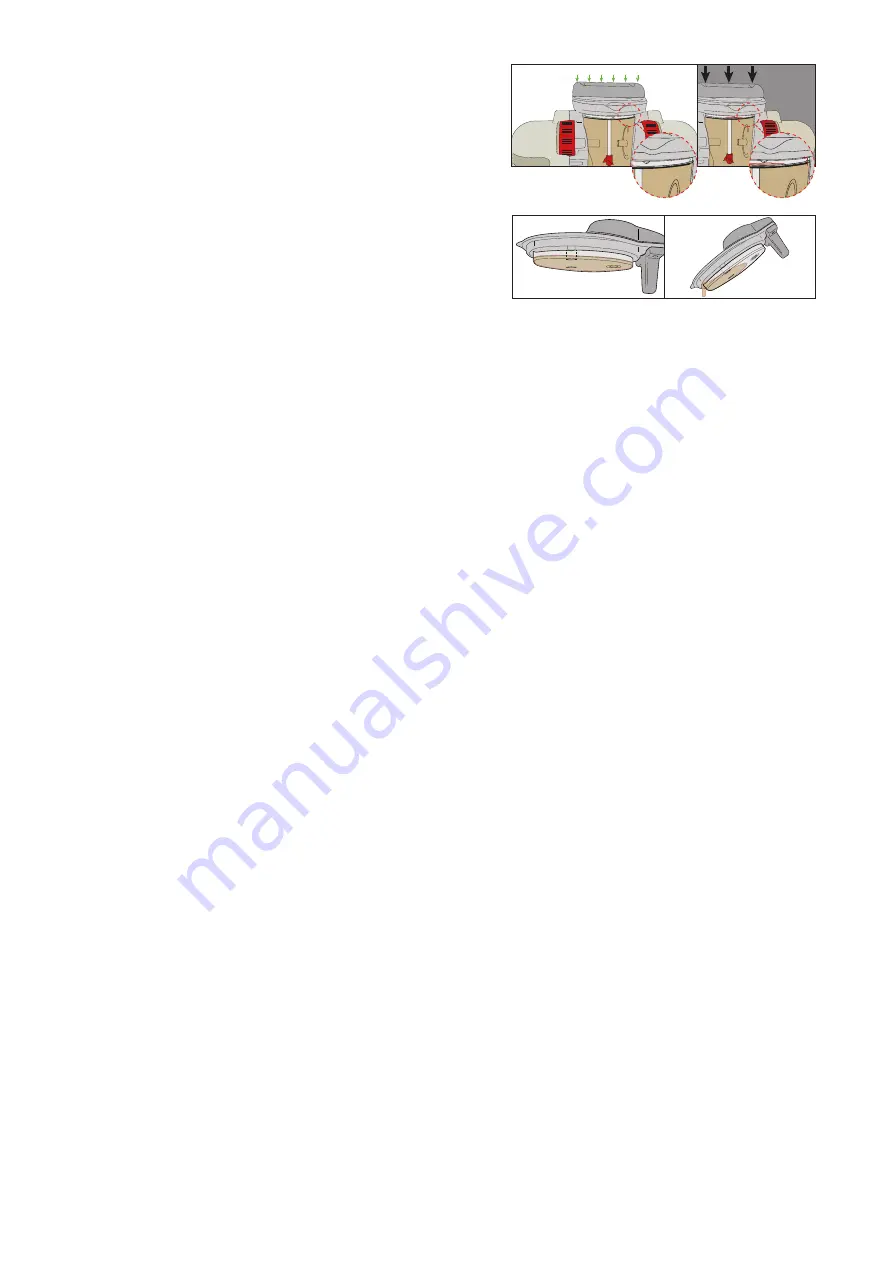
12
■
■
Gently place the stirrer lid onto the test vessel so that the
baffle plate contacts the oil slowly, again so not to cause
splashing that will introduce unwanted air bubbles into
the test sample
■
■
Periodically remove baffle plate from the stirrer lid and clean
thoroughly.
4.
Selecting the optimum stirring option for the insulating oil sample to minimise air/moisture
contamination
When testing to IEC 60156:
IEC 60156 allows the optional use of a stirring impeller, the use of a magnetic bead stirrer or even no stirring at all.
The standard states that differences between tests with or without stirring have not been found to be statistically
significant. The use of a magnetic stirrer is only permitted when there is no risk of removing magnetic particles from
the oil sample under test. When oil is used as a coolant as well as an insulator it may be useful to stir the sample during
testing. For example oil from a transformer is normally circulated in use to help cool the transformer, but in doing so
might also pick up contaminants and debris with it; so to achieve the most realistic breakdown results an oil sample
taken from such a device would normally be stirred during test to ensure the best chance of detecting any detrimental
effects of particle contamination. Oil from a circuit breaker is normally static in use, so particles would naturally fall to
the bottom where they are unlikely to cause a problem. So in static use applications, an oil sample would not usually be
stirred during testing.
The use of a magnetic bead for IEC60156 is recommended where possible as oil will circulate in the lower portion
of the test vessel, whereas the impeller will circulate all of the oil in the test vessel. The magnetic bead therefore has
the advantage that any moisture absorbed by oil in contact with air is not stirred into the sample, avoiding unwanted
contamination. If the impeller is used it is vital that air is prevented from coming into contact with the surface of the
oil by fitting the baffle plate and ensuring that the oil level is sufficient to make contact with the bottom surface of the
plate without flowing over its top surface.
When testing to ASTM D1816:
ASTM D1816 specifies that the oil is stirred throughout the test sequence, and a two bladed motor-driven impeller
is specified. The standard prescribes the impellor dimensions and pitch as well as the operating speed, which must
be between 200 rpm and 300 rpm. But remember, with this stirring requirement it is vital that air is prevented from
coming into contact with the oil as described above.
When testing to ASTM D877:
ASTM D877 does not specify oil sample stirring.
FIT STIRRER LID CAREFULLY
DO NOT SPLASH
400ml Fill to Line
400ml Fill to Line
400ml Fill to Line
400ml Fill to Line
✓
✖
Empty trapped oil - occurs if overfilled
Figure 4 Filling the test vessel













































